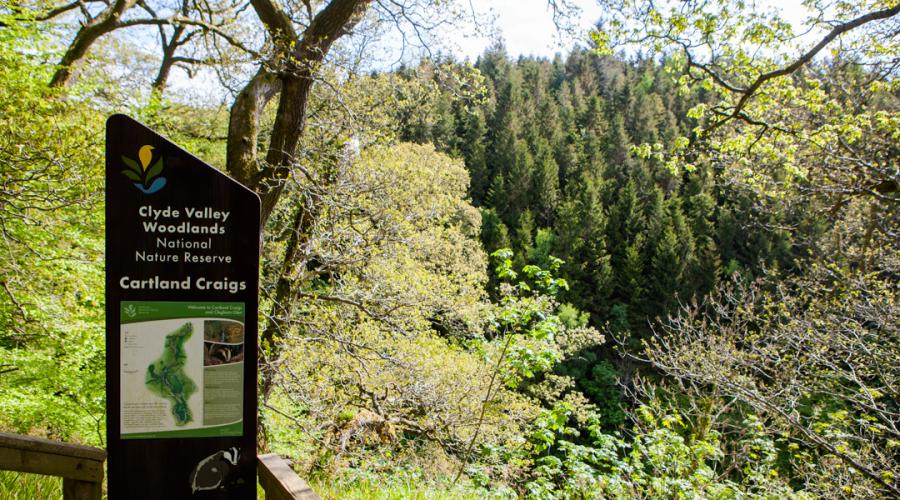
Clyde Valley Woodlands NNR - Visiting the reserve
Visit Clyde Valley Woodlands for magical walks among tracts of ancient forest.
Getting here
Cartland Craigs and Cleghorn Glen, Clyde Valley Woodlands NNR is just north of Lanark.
By car
Lanark is less than an hour’s drive from Glasgow (40 kilometres) or Edinburgh (56 kilometres). It is well signposted from the M74 and has a regular train service to Glasgow Central and Motherwell.
Car parks
Cartland Bridge. There is a small parking area on the north-west side of Cartland Bridge about 1.5 kilometres north-west of Lanark on the A73. The grid reference is NS 868444.
ML11 9UF is the nearest postcode.
Cleghorn Glen. There is informal parking at the end of Bellefield Road – off the A706 on the north side of Lanark. The grid reference is NS 886452.
ML11 7RH is the nearest postcode.
Map
Clyde Valley Woodlands National Nature Reserve
For visitors
The Visit Clyde Valley Woodlands leaflet is a good introduction to the reserve.
Trails for all
Take the trail through the gorge for the length of the reserve between Cartland Bridge and Cleghorn Bridge (6 kilometres – one way).
From Lanark, you can enter the reserve at Leitchford Bridge and make a circular route using tracks and minor roads.
The gorges have steep and unstable cliffs, so stay away from the edges and try to keep to the paths. Keep children with you and dogs on their leads or at heel.
Clyde Valley Woodlands trail leaflet describes six trails on the reserve.
Seasonal highlights
You’re sure to find something of interest all year round at Clyde Valley Woodlands, but the best times to visit are between May and October.
Spring
In spring the woodlands are filled with the beautiful song of wood warbler, chaffinch and long-tailed tit. The woodland floor is carpeted with wood anemone, wild garlic, dog’s mercury, wood sorrel, bluebell and primrose.
Summer
Look out for great spotted woodpeckers and tawny owls, which nest in the standing deadwood in the woodlands. Cracks in the bark of a mature tree are all that a treecreeper needs to make its nest. Look out too for tracks and signs of badgers and roe deer.
Autumn
As the woodlands are managed for the benefit of wildlife, there is an abundance of deadwood – both standing and on the ground. This provides ideal conditions for fungi and for the insects that live behind the bark. Have a close look at these miniature worlds and see what you can spot.
Winter
The reserve is quiet and peaceful in winter, ideal for invigorating winter walks. Not so the rivers and burns, which can be spectacular, especially at Cleghorn Glen. Winter is often the best time to appreciate this dramatic landscape, as the leafless trees allow better views.
Find out more on
- Visiting the reserve leaflet
- About the reserve
- Visit more of our nature reserves
Related Links
- Designation and management of Scotland’s National Nature Reserves
- Learn more about other protected areas



